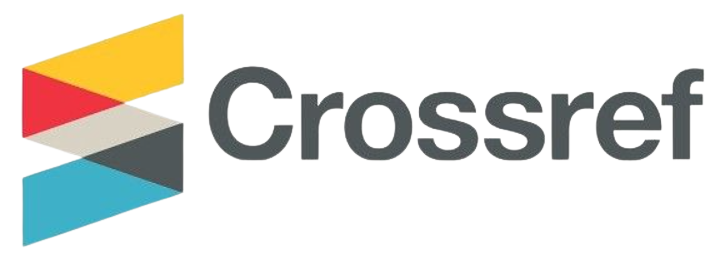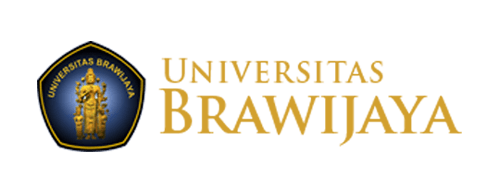Pengamanan Citra Digital Menggunakan Kriptografi DnaDan Modified LSB
DOI:
https://doi.org/10.25126/jtiik.2024117666Abstrak
Enkripsi citra digital menggunakan Kriptografi DNA menggabungkan ilmu komputasi dengan prinsip biologis untuk memberikan keamanan ganda. Proses enkripsi terdiri dari dua lapisan. Lapisan pertama, sistem chaos seperti Arnold's Cat Map (ACM) digunakan untuk mengacak posisi piksel melalui beberapa iterasi, sementara Logistic Map (LM) membangkitkan keystream karena sensitivitasnya yang tinggi. Lapisan kedua melibatkan karakteristik DNA, yang memanfaatkan basa nukleotida (A, T, C, G) untuk mengenkripsi data citra pada tingkat molekuler, menghasilkan tingkat keacakan yang tinggi. Setelah enkripsi, ciphertext disembunyikan dalam citra sampul menggunakan teknik steganografi Modified Least Significant Bit (MLSB), yang mengoptimalkan penyisipan bit di saluran RGB dengan pemilihan piksel acak menggunakan generator modulo. Hasil pengujian menunjukkan kualitas enkripsi yang sangat baik, dengan nilai NPCR ≥ 98%, UACI ≥ 30%, koefisien korelasi ≃ 0, entropi ≃ 8, dan histogram yang datar (flat). Kualitas stego-image optimal dicapai dengan penyisipan satu bit pada saluran RGB, menghasilkan PSNR ≥ 50dB. Ketahanan stego-image terhadap noise salt & pepper bergantung pada ukuran citra sampul, persentase noise, dan jumlah bit sisip yang digunakan. Hasil tersebut menunjukkan bahwa kombinasi Kriptografi DNA, ACM, LM, dan MLSB memberikan keamanan yang tinggi dan sulit ditembus.
Abstract
Digital image encryption using DNA Cryptography combines computational science with biological principles to provide dual security. The encryption process consists of two layers: first, a chaotic system like Arnold's Cat Map (ACM) is used to shuffle pixel positions through several iterations, while the Logistic Map (LM) generates a keystream due to its high sensitivity. The second layer involves DNA characteristics, utilizing nucleotide bases (A, T, C, G) to encrypt image data at the molecular level, resulting in higher randomness. After encryption, the ciphertext is hidden within a cover image using Modified Least Significant Bit (MLSB) steganography, which optimizes bit insertion in the RGB channels by selecting random pixels using a modulo generator. Experimental results show excellent encryption quality, with NPCR ≥ 98%, UACI ≥ 30%, correlation coefficient close to 0, entropy close to 8, and a flat histogram. Optimal stego-image quality is achieved with a single bit insertion in the RGB channels, resulting in PSNR ≥ 50dB. The resistance of the stego-image to salt & pepper noise depends on the cover image size, noise percentage, and the number of inserted bits. The results indicate that the combination of DNA Cryptography, ACM, LM, and MLSB provides high security and is difficult to breach.
Downloads
Referensi
on Artificial Intelligence and Smart Energy, ICAIS 2022, 1453–1457. https://doi.org/10.1109/ICAIS53314.2022.9742942
LAN, R., HE, J., WANG, S., GU, T., & LUO, X. 2018. Integrated chaotic systems for image encryption. Signal Processing, 147, 133–145. https://doi.org/10.1016/j.sigpro.2018.01.026
LIU, Q., & LIU, L. 2020. Color Image Encryption Algorithm Based on DNA Coding and Double Chaos System. IEEE Access, 8, 83596–83610. https://doi.org/10.1109/ACCESS.2020.2991420
LUO, Y., YU, J., LAI, W., & LIU, L. 2019. A novel chaotic image encryption algorithm based on improved baker map and logistic map. Multimedia Tools and Applications, 78(15), 22023–22043. https://doi.org/10.1007/s11042-019-7453-3
MUSANNA, F., RANI, A., & KUMAR, S. 2018. Image encryption using chaotic 3-D Arnold’s cat map and logistic map. Advances in Intelligent Systems and Computing, 704, 365–378. https://doi.org/10.1007/978-981-10-7898-9_30
NIE, S. A., SULONG, G., ALI, R., & ABEL, A. 2019. The use of least significant bit (LSB) and knight tour algorithm for image steganography of cover image. International Journal of Electrical and Computer Engineering, 9(6), 5218–5226. https://doi.org/10.11591/ijece.v9i6.pp5218-5226
PANWAR, S., KUMAR, M., & SHARMA, S. 2020. Digital Image Steganography Using Modified LSB and AES Cryptography (N. Nain & S. K. Vipparthi, Eds.; Vol. 1122). Springer International Publishing. https://doi.org/10.1007/978-3-030-39875-0
POI WONG, N., HARDY, MEGAWAN, S., & ANDRI. 2019. Steganography using Mode-Based Least Significant Bit (MBLSB) Method. https://doi.org/10.1109/ICIC47613.2019.8985693
POURJABBAR KARI, A., HABIBIZAD NAVIN, A., BIDGOLI, A. M., & MIRNIA, M. 2021. A new image encryption scheme based on hybrid chaotic maps. Multimedia Tools and Applications, 80(2), 2753–2772. https://doi.org/10.1007/s11042-020-09648-1
QAYYUM, A., AHMAD, J., BOULILA, W., RUBAIEE, S., ARSHAD, MASOOD, F., KHAN, F., & BUCHANAN, W. J. 2020. Chaos-Based Confusion and Diffusion of Image Pixels Using Dynamic Substitution. IEEE Access, 8, 140876–140895. https://doi.org/10.1109/ACCESS.2020.3012912
RADKE, S. S., SCHOLAR, R., & MISHRA, D. S. 2021. Review of Image Security approaches: Concepts, Issues, Challenges and Applications.
RAJ, B., JANI ANBARASI, L., NARENDRA, M., & SUBASHINI, V. J. 2019. A New Transformation of 3D Models Using Chaotic Encryption Based on Arnold Cat Map. In Lecture Notes on Data Engineering and Communications Technologies (Vol. 29, pp. 322–332). Springer Science and Business Media Deutschland GmbH. https://doi.org/10.1007/978-3-030-12839-5_29
SAMIULLAH, M., ASLAM, W., NAZIR, H., LALI, M. I., SHAHZAD, B., MUFTI, M. R., & AFZAL, H. 2020. An Image Encryption Scheme Based on DNA Computing and Multiple Chaotic Systems. IEEE Access, 8, 25650–25663. https://doi.org/10.1109/ACCESS.2020.2970981
SINGH, A. K., CHATTERJEE, K., & SINGH, A. 2023. An Image Security Model Based on Chaos and DNA Cryptography for IIoT Images. IEEE Transactions on Industrial Informatics, 19(2), 1957–1964. https://doi.org/10.1109/TII.2022.3176054
ULLAH, S., ZHENG, J., DIN, N., HUSSAIN, M. T., ULLAH, F., & YOUSAF, M. 2023. Elliptic Curve Cryptography; Applications, challenges, recent advances, and future trends: A comprehensive survey. In Computer Science Review (Vol. 47). Elsevier Ireland Ltd. https://doi.org/10.1016/j.cosrev.2022.100530
XUEJING, K., & ZIHUI, G. 2020. A new color image encryption scheme based on DNA encoding and spatiotemporal chaotic system. Signal Processing: Image Communication, 80. https://doi.org/10.1016/j.image.2019.115670
ZAREAI, D., BALAFAR, M., & FEIZI DERAKHSHI, M. R. 2021. A new Grayscale image encryption algorithm composed of logistic mapping, Arnold cat, and image blocking. Multimedia Tools and Applications, 80(12), 18317–18344. https://doi.org/10.1007/s11042-021-10576-x
ZHENG, J., & HU, H. 2021. A symmetric image encryption scheme based on hybrid analog-digital chaotic system and parameter selection mechanism. Multimedia Tools and Applications, 80(14), 20883–20905. https://doi.org/10.1007/s11042-021-10751-0
Unduhan
Diterbitkan
Terbitan
Bagian
Lisensi
Hak Cipta (c) 2024 Jurnal Teknologi Informasi dan Ilmu Komputer

Artikel ini berlisensiCreative Commons Attribution-ShareAlike 4.0 International License.

Artikel ini berlisensi Creative Common Attribution-ShareAlike 4.0 International (CC BY-SA 4.0)
Penulis yang menerbitkan di jurnal ini menyetujui ketentuan berikut:
- Penulis menyimpan hak cipta dan memberikan jurnal hak penerbitan pertama naskah secara simultan dengan lisensi di bawah Creative Common Attribution-ShareAlike 4.0 International (CC BY-SA 4.0) yang mengizinkan orang lain untuk berbagi pekerjaan dengan sebuah pernyataan kepenulisan pekerjaan dan penerbitan awal di jurnal ini.
- Penulis bisa memasukkan ke dalam penyusunan kontraktual tambahan terpisah untuk distribusi non ekslusif versi kaya terbitan jurnal (contoh: mempostingnya ke repositori institusional atau menerbitkannya dalam sebuah buku), dengan pengakuan penerbitan awalnya di jurnal ini.
- Penulis diizinkan dan didorong untuk mem-posting karya mereka online (contoh: di repositori institusional atau di website mereka) sebelum dan selama proses penyerahan, karena dapat mengarahkan ke pertukaran produktif, seperti halnya sitiran yang lebih awal dan lebih hebat dari karya yang diterbitkan. (Lihat Efek Akses Terbuka).















